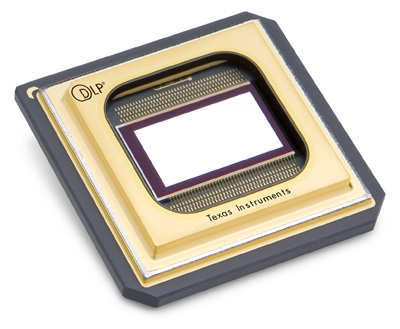
Everything you ever wanted to know about DLP projectors
The DLP chip used in DLP projectors was invented in 1987 by Dr. Larry Hornbeck, a physicist at Texas Instruments
Is Dr. Larry’s invention right for you? Read on to find out.
How do DLP projectors work?
Inside a DLP (digital light processing) projector is a DLP chip covered in millions of mirrors. These mirrors are tiny: less than a fifth the width of a human hair.
Each mirror represents a single pixel. They tilt back and forth, reflecting light as necessary to create a highly detailed grayscale image.
The light is directed through a spinning color wheel. The wheel synchronizes with the DLP chip to create the final projected image.

Pros and cons of DLP projectors
Pros
Because a mirror on a DLP’s microchip can be stopped from reflecting any light, DLP projectors traditionally provide much darker black levels than LCD projectors. They are especially popular among home theater enthusiasts.
DLP projectors provide a less pixelated image than very, very low price LCDs. They also tend to project a sharper looking image during fast motion scenes.
Cons
Dollar for dollar, DLP projectors are generally not as bright as their LCD counterparts.
ome DLP projectors produce “rainbows”, a colorful trail that follows a moving object across the screen. Many customers don’t notice these, while others are extremely sensitive. Call a projector expert to learn more about a specific model.
Most popular with ...
Since higher-end DLP projectors traditionally last longer than their LCD counterparts, they are great for art galleries, museums, restaurants, schools, emergency response centers and retail stores.
